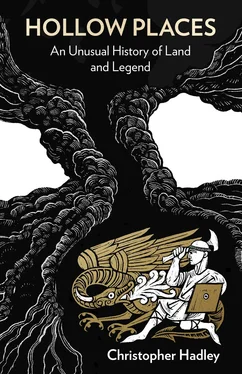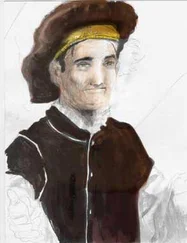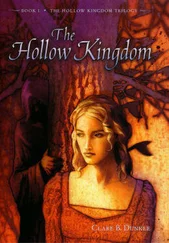‘I know of no part of England more beautiful in its stile than Hertfordshire,’ wrote Sir John Parnellin 1769. Here the ancient fields were bordered by ancient hedgerows that were practically small strips of woodland. In an 1837 article lamenting the fall of an ancient yew in a hurricane, one eulogistwrote: ‘There are few objects of nature presenting more real interest to the mind, or richer points of beauty to the eye, than a noble aged tree; and at times these glories of the forest become associated, either from intrinsic character or local situation, with our best and purest feelings.’ We know that folk, and not just poets, loved trees. In Matilda Betham-Edwards’ novel about rural Suffolk in the 1840s, The Lord of the Harvest , Kara Sage the wife of the farm headman finds companionship in a magnificent elm. She ‘never tired of gazing at that ancient tree’. But we are told that in her love of nature she was ‘unlike her neighbours’. Still, she was not alone in literature: Thomas Hardy’s eponymous Woodlanders Marty South and Giles Winterborne were also said to be rare in their ‘level of intelligent intercourse with Nature’, when they knew by a glance at a trunk if a tree’s ‘heart were sound, or tainted with incipient decay; and by the state of its upper twigs the stratum that had been reached by its roots’.
Even if we doubt that in such a practical age someone left the tree standing simply for its grandeur, we cannot doubt the effect such a tree might have had on the superstitious – that fear may have stopped their axes. At Old Oswestry Hillfort in Shropshire, the countryside has been stripped of trees except for a single old yew. ‘It was probably spared because of a superstition about felling yews or because yews are very hard and so difficult to fell,’ suggests one Shropshire natural historian. In his 1896 article ‘Folk-Lore in Essex and Herts’, U. B. Chisenhale-Marsh wrote that ‘All about our own neighbourhood it is very customary, in clipping hedges, to leave small bushes or twigs standing at intervals, originally, no doubt, to keep away the evil spirits, or as propitiation to those that were cut away.’ What better way to appease the spirits of the vanished woodland than to leave them the sanctuary of an ancient yew, to watch, and wait, and guard the secret at its roots for a few years more?
Many writers at different times have engaged passionately by proxy in the fairy world. Most of the accounts of encounters in fairyland report incidents and adventures that occurred to someone else. This is the terrain of anecdote, ghost sightings, and old wives’ tales, of oral tradition, hearsay, superstition, and shaggy dog stories: once upon a time and far away among another people …
—Marina Warner, Once Upon a Time , 2014
‘Except for their gravestones and their children, they left nothing identifiable behind them,’ wrote historians George Rudé and Eric Hobsbawm of the nineteenth-century agricultural labourer, ‘for the marvellous surface of the British landscape, the work of their ploughs, spades and shears and the beasts they looked after bears no signature or mark such as the masons left on cathedrals.’ They are right that the traces are few, but the fields themselves carried names and sometimes they were the names of men who had worked them and, if the land bore names, so I expect did the men’s tools, their initials cut plainly into hafts alongside the initials of their fathers who swung them at other trees on other mornings. Did the yew tree itself also bear their names? One historian has noted that boundary trees ‘were deeply scoredwith carved and ever enlarging parish initials, from which the ivy was regularly stripped’. Did local men carve their names into the trunk of the yew as plainly as they did into the stone window jambs and leadwork of the Pelham churches? Even if they did, the tree is long gone, the tools are lost, and the field names are slipping from memory. Where now can we find Master Lawrence the carpenter and the labourers who believed in dragons?
In October 1904 the Hertfordshire historian Robert Andrews went to Anstey, a village next to Brent Pelham, chasing the legend of a secret tunnel, a blind fiddler and the devil. ‘The tenant of the little house at Cave Gate near Anstey was digging upon the premises held by him and found that the tool he was using suddenly sunk into the ground almost throwing him down,’ wrote Andrews. This tenant was old Thomas Skinner and he had found the entrance to a tunnel in the chalk. Skinner was a carpenter who had ‘passed his early years in the near neighbourhood’ and had recently retired to Cave Gate, ‘where he can, if he chooses, smoke his pipe under one of the most magnificent trees in Hertfordshire’. Perhaps it was while sitting under this tree talking to his guest about local folklore that he mentioned that in his boyhood his family had taken loppings from an ancient yew tree felled on the boundary of Great Pepsells field.
This was a tantalising reference. Not only did it place the felling of the tree in Thomas Skinner’s boyhood in the 1830s – tallying with the map and other evidence – but the Skinner family were agricultural labourers who just happened to share a house in Brent Pelham with another labourer, Thomas Lawrence, the cousin of the carpenter William Lawrence whose sons would one day become Wigram’s parish clerks. I would never know for sure, and it did not really matter, but I was unlikely to do better than to send these men to fell the tree one winter’s day in 1834.
Like many agricultural labourers in the early nineteenth century, the Skinners awoke in a single room in a house shared with another family. There was scant light on a winter’s morning and a ceiling open to the rough rafters did little to keep the place warm. If a labourer’s wife were house-proud, he would take his breakfast sitting on a chair varnished with homemade beer, and there might be bread with dripping washed down with ‘tea’ (made from burned toast), or perhaps ‘coffee’ (made from burned toast). Many labourers spent half their week’s wages on bread, but could not settle the baker’s bill until they had killed their pig at the end of the year. These are the generalisations of the historian, but the 1830s were not a happy time for agricultural labourers, especially in the winter months when trees were traditionally felled. Winter was also the time for job creation schemes (or as the historians of the rural poor, the Hammonds, put it in their inimical and depressing way, ‘Degrading and repulsive work was invented for those whom the farmer would not or could not employ’). One economic historian has estimated that 17 per cent of agricultural labourers were out of workin winter in the early 1830s. They would get poor relief, but it also meant that labourers could find themselves shared out between farmers who would find them things to do. The winter of 1834 was particularly bad, because the harvest had failed. ‘I am fearful we shall experience much difficulty this Winter in finding employment for the Poor,’ wrote a prominent Essex land agent, in a letter to his client, insisting they must reduce the burden of tithe payments that year.
Across the country, and especially in the south, large numbers of agricultural labourers had been turned into paupers by a system that saw the rate-payers, who were also their employers, agree to pay or subsidise their wages through the poor rate. The money they took home each week was linked to the size of their family and the price of a loaf of bread. There were many variations to this system. In some villages, labourers were auctioned weekly to the highest bidders. One Nathan Driverexplained to the Select Committee on the Poor Laws how things worked in Furneux Pelham. There were some ninety agricultural labourers in a parish of 2,500 acres, which according to Mr Driver meant there were eighteen labourers too many. The solution was to put the names of all ninety labourers in a hat and share them out between the farms in Furneux Pelham – according to their size – on a daily basis. The farmers would then have to find something for them to do – chopping down a tree, for example.
Читать дальше












